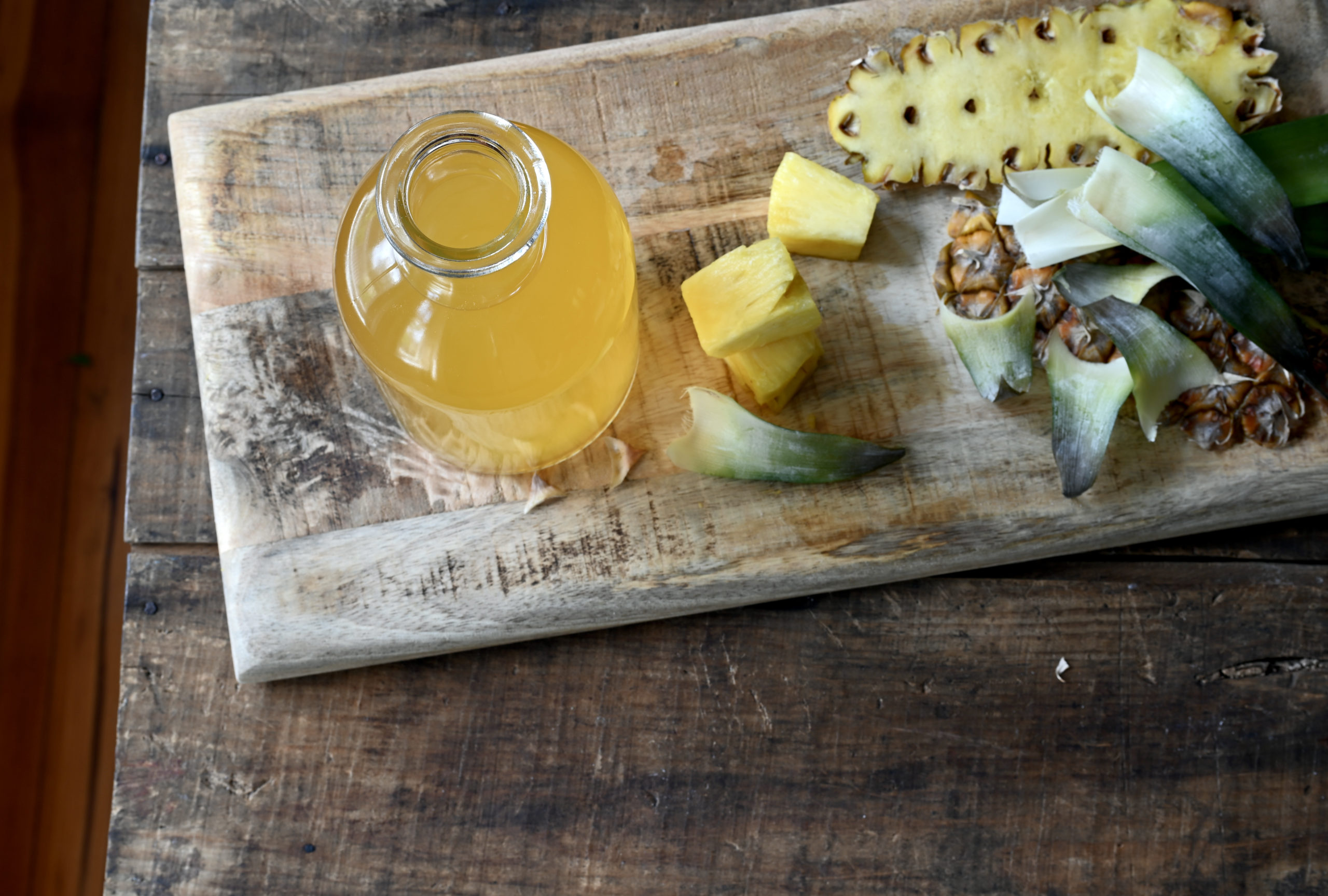
If you ever wonder if pineapples can make vinegar, I have the answer for you here: Pineapple Vinegar!
Ever since I realized how much garbage people leave behind after each meal, I became determined to cook and to make anything from scratch possible to reduce garbage from my own eating.
This includes making my own tofu, yogurt, vegan butter, soy sauce and so on. However, there was one thing I felt intimidated and afraid to make: my own apple cider vinegar.
I don’t know why? However, after a few attempts, I finally succeeded. I then realized that apple cider vinegar is one of the simplest things to make.
Once I get comfortable making it, I plan my timing nicely so I always have homemade apple cider vinegar on hand–no more buying it.
Then, I thought about my family and friends in Thailand, most of them can’t get apples easily the way I do in the US–I want them to be able to make good vinegar too.
Although apples are not so easy to get in Thailand and Asia, pineapples are everywhere, and all year long.
So, I started making Pineapple Vinegar the exact same way I do with apple cider vinegar. Without any disappointment, it works amazingly well, and the vinegar is beautiful and aromatic!
As I like drinking pineapple juice and make it often, I decided to juice the cultured pineapples too. Doing so I get more vinegar from it. It might be hard to do the same if you don’t have a juicer, but you might be able to squeeze it in a cloth bag with some weight on top.
Ready to make your own Pineapple Vinegar, let me show you how!
Ingredients:
Note: this is for a ½ gallon jar.
- A ripe pineapple
- ¼ cup unbleached white sugar. Note: the sugar is to feed the bacteria, and white sugar works best. Don’t worry, you don’t taste any sweetness from it in the end.
- Filtered water.
Equipment:
- 1 ½ gallon glass jar
- A breathable cheesecloth that is thick enough to prevent fruit flies and a rubber band
Instructions:
- Day 1, Wash the pineapple This step is to prevent any dirt from touching hands when peeling it.
- Peel, remove the pineapple eyes, and cut it into small chunks. (about 1”x1”).
- Put the chunks into a glass jar up to its shoulder.
- Add the sugar and cover the pineapple chunks with filtered water. Try to push the chunks down as much as you can. It’s still difficult but it will get easier in the next few days when the pineapple chunks are softer.
- Cover the jar with a breathable cloth, secure it with a rubber band, and put the jar away from direct sunlight at room temperature.
- During the 1sth week, push the chunks down and try to rotate the ones at the bottom to the top once a day. You should see bubbles start forming along with the alcohol smell by day 3.
- During the 2nd & 3rd week, there are less bubbles but the alcohol smell is still strong. Repeat the pushing/stirring process every 2-3 days. You can do it every day too if you prefer.
- By week 4, you might see some white film on top on the days you don’t stir, and that’s normal. The bubbels and alcohol smell have subsided, it tastes sour almost like vinegar, but it’s not quite ready to use yet. The chunks should be well under the water, and you shouldn’t have any bad mold. (fuzzy-black or slimy pink) It’s time to strain it for the second ferment.
- Strain the pineapple chunks in a strainer and put the vinegar in a new clean glass jar. Cover it loosely with a lid and let it ferment for another month.
- The pineapple chunks are now fermented, and there is still a lot more juice in them. You can juice them the way I do with a juicer. The color of the juice is much more yellow than the one we strained earlier. Put the juice in a clean glass jar and also let it ferment for another month. Note: if you don’t have a juicer, try putting them in a cloth bag and put a heavy item on top to squeeze it.
- After 4 weeks of the second ferment, the vinegar is now ready. There is white film on top of the jar but there shouldn’t be any bad mold. It’s time to filter it.
- Put a few layers of cheesecloth inside a strainer and filter the vinegar through. If you want clear vinegar, stop when the sediment starts to come out. You can use it separately. It tastes the same but it doesn’t look appealing.
- Put the vinegar in convenient glass bottles and store it at room temperature, the way you do with apple cider vinegar. Use it the same way you do with apple cider vinegar!
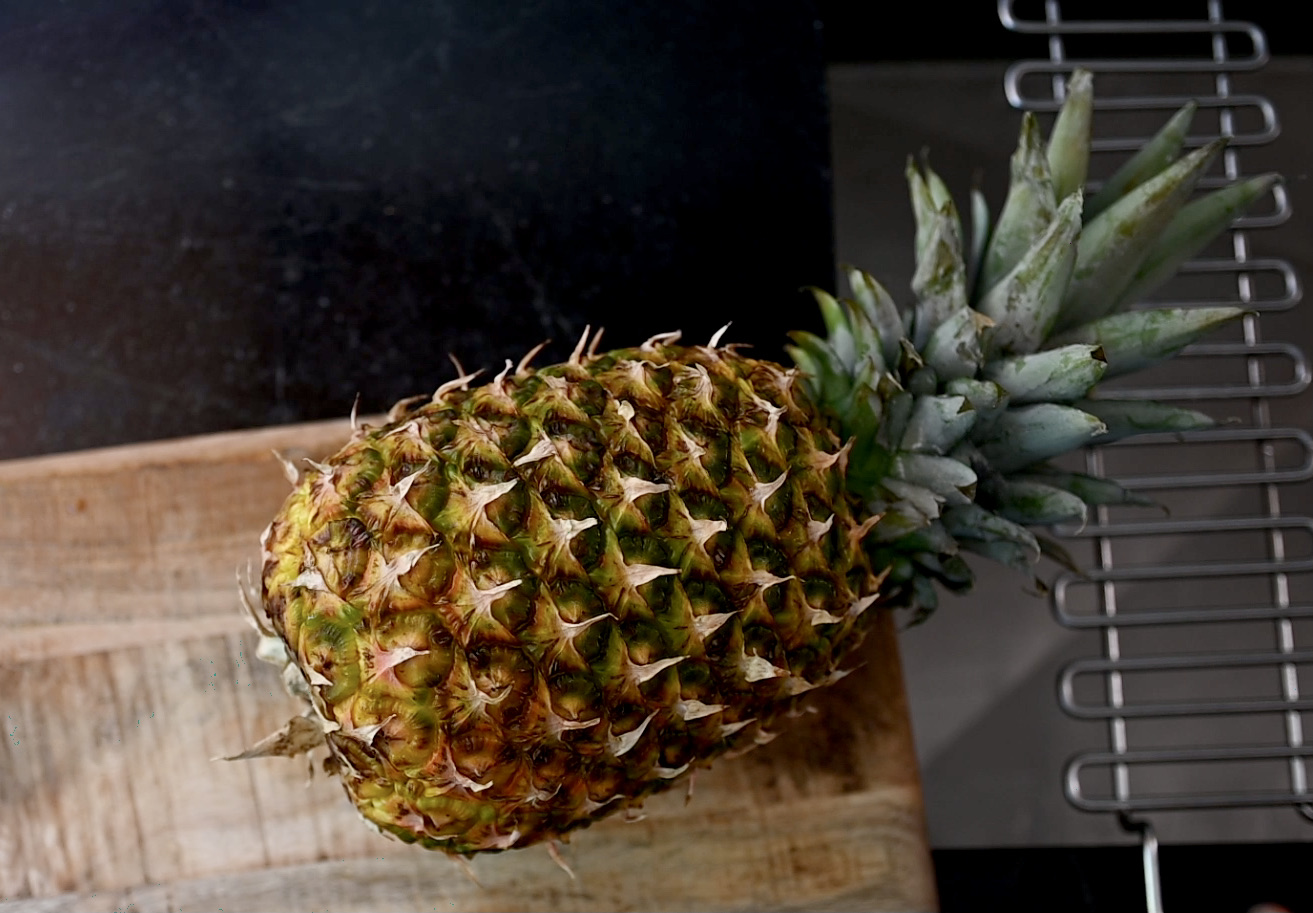
a fresh and ripe pineapple
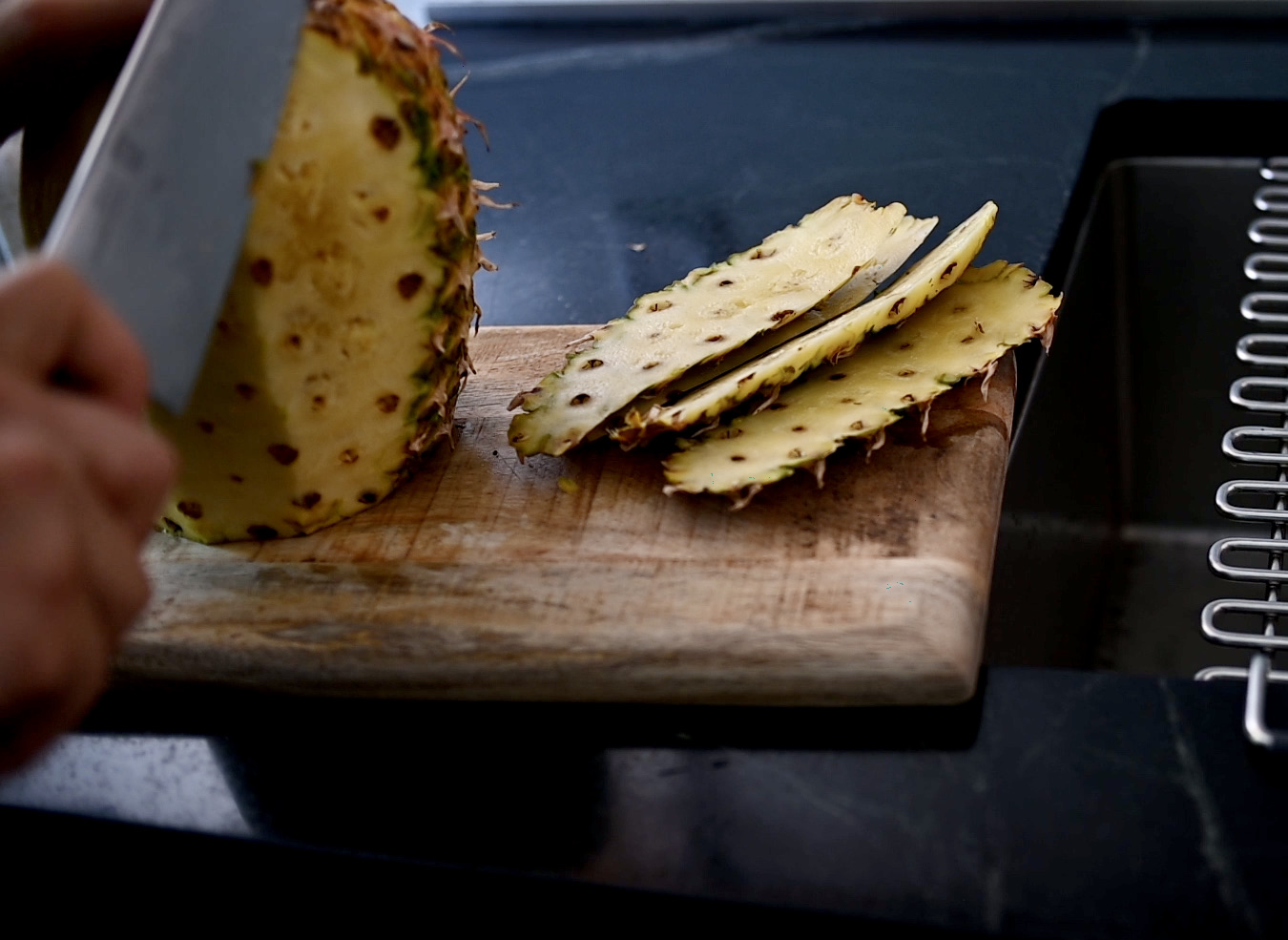
peel off the thick rind with a sharp knife
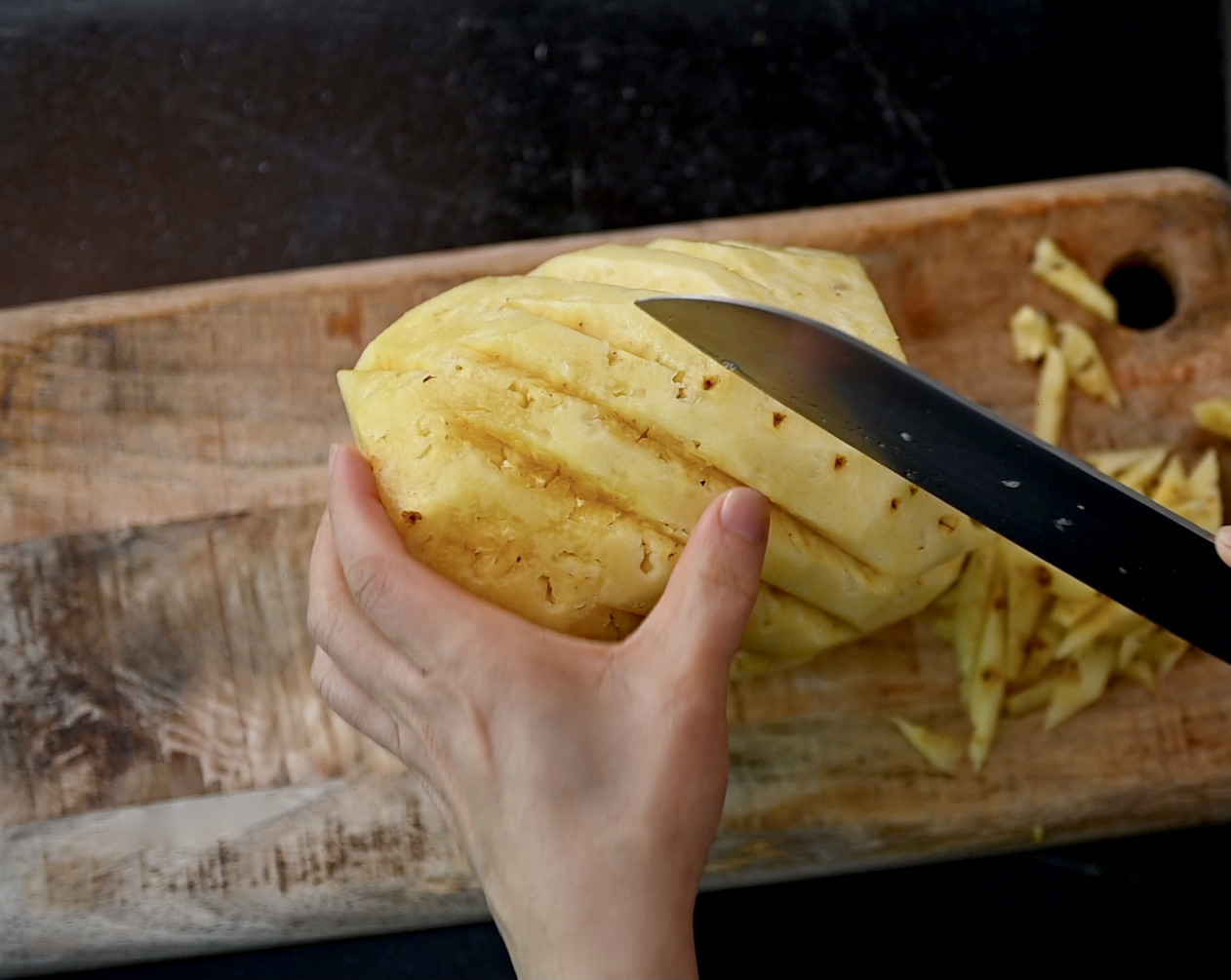
removing the eyes but not to cut off to much pineapple meat
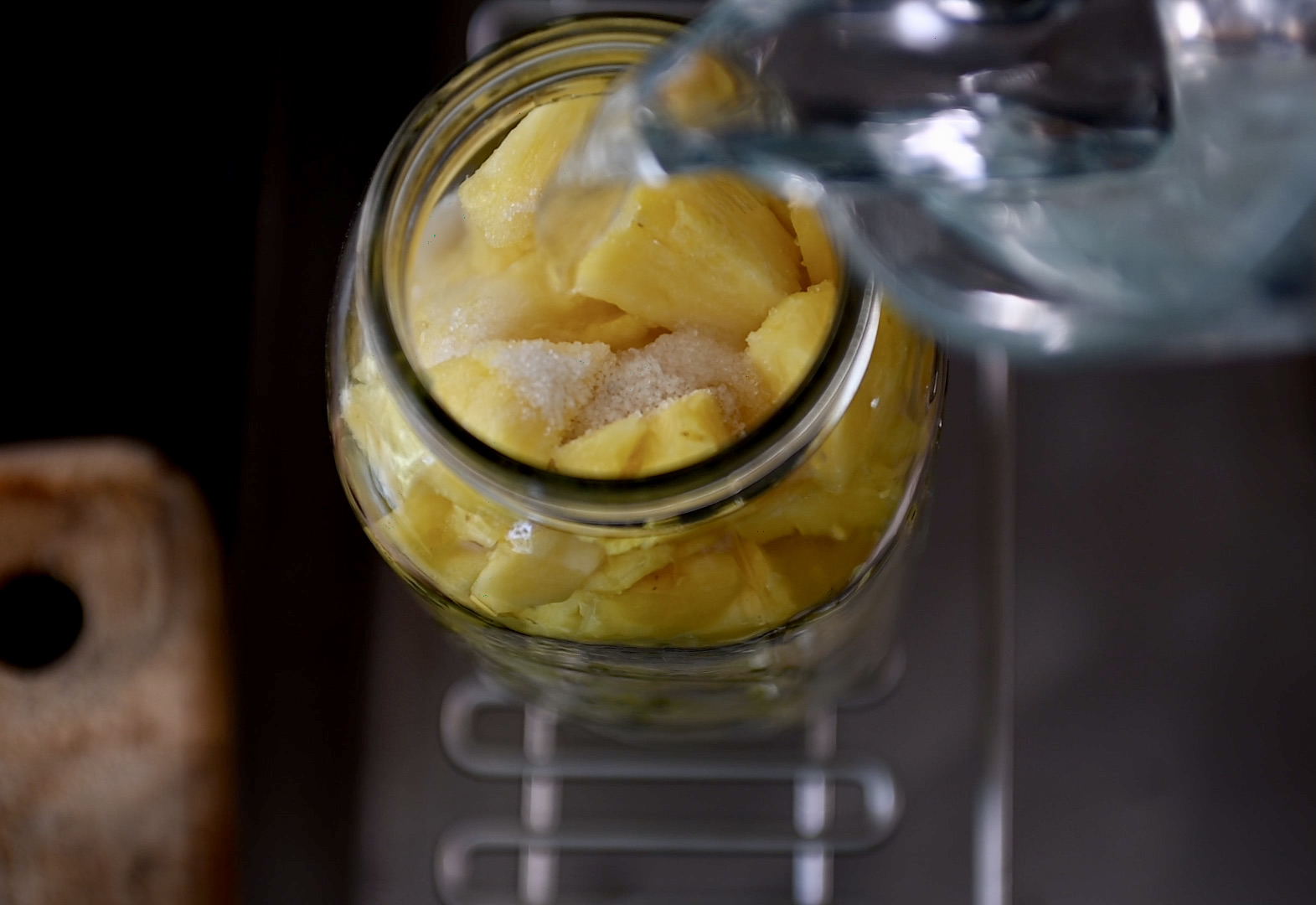
mix with sugar and filtered water
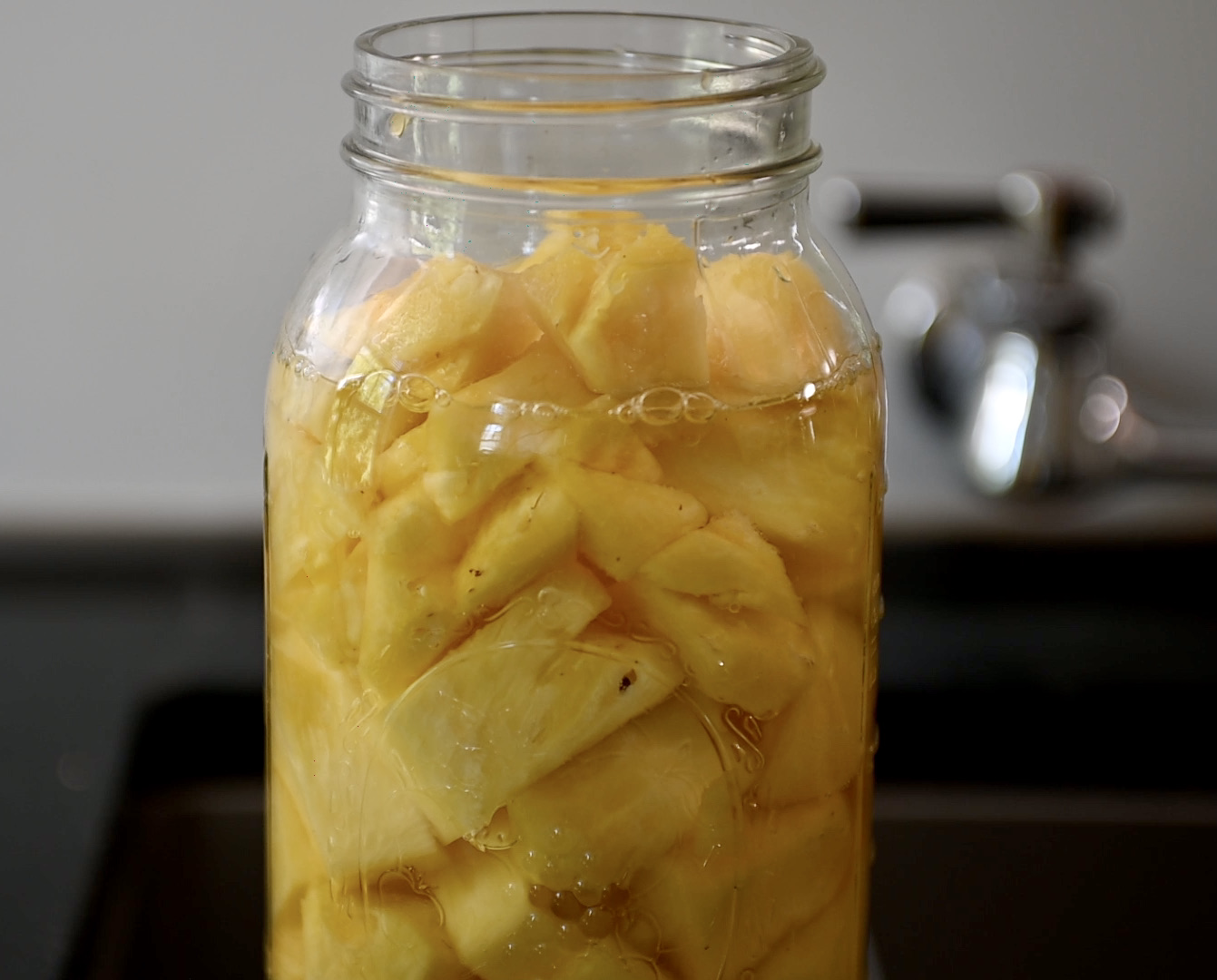
leave about 1-2 inches of space to the rim
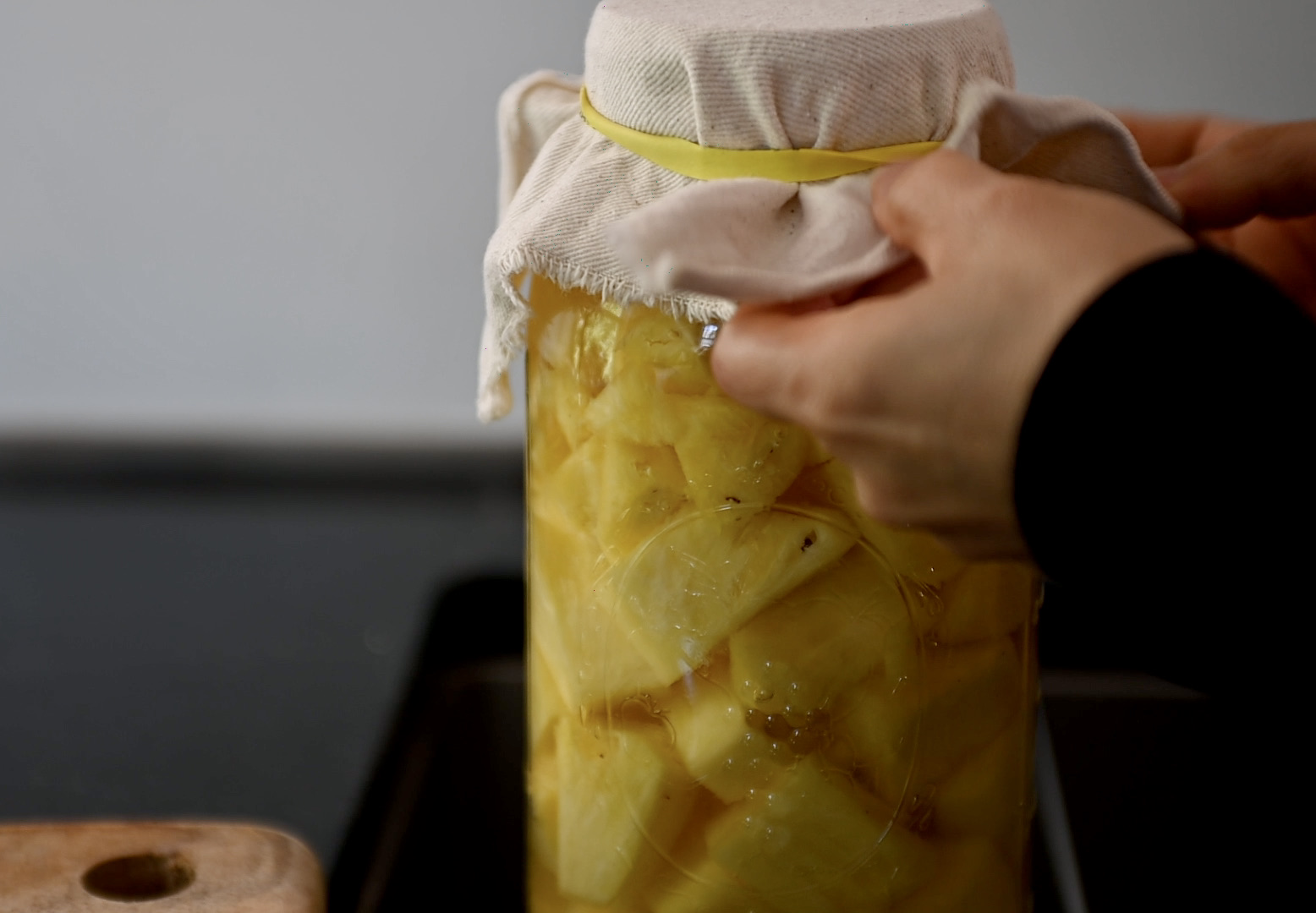
cover it with a breathable cloth that is thick enough to prevent flies
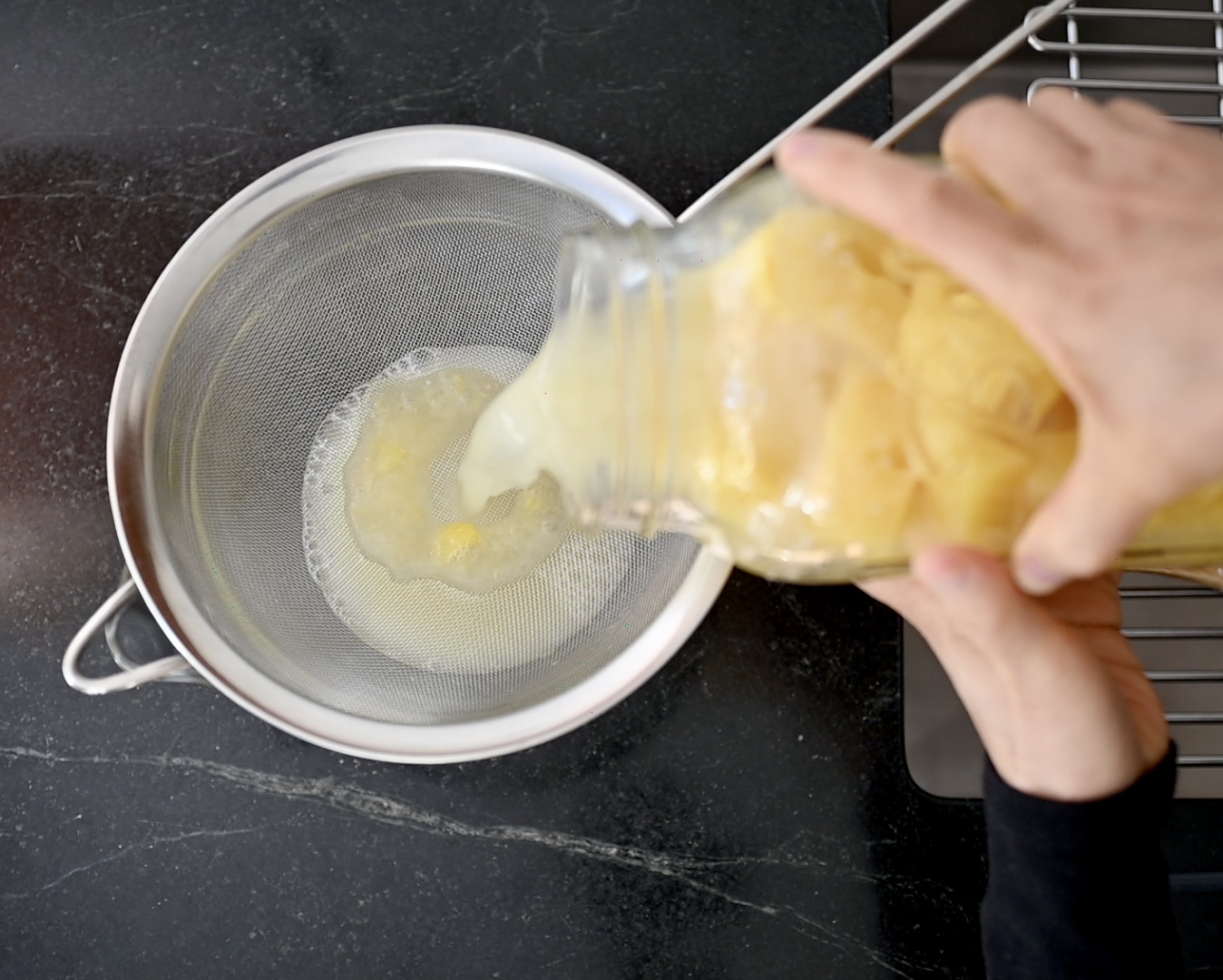
straining the first ferment
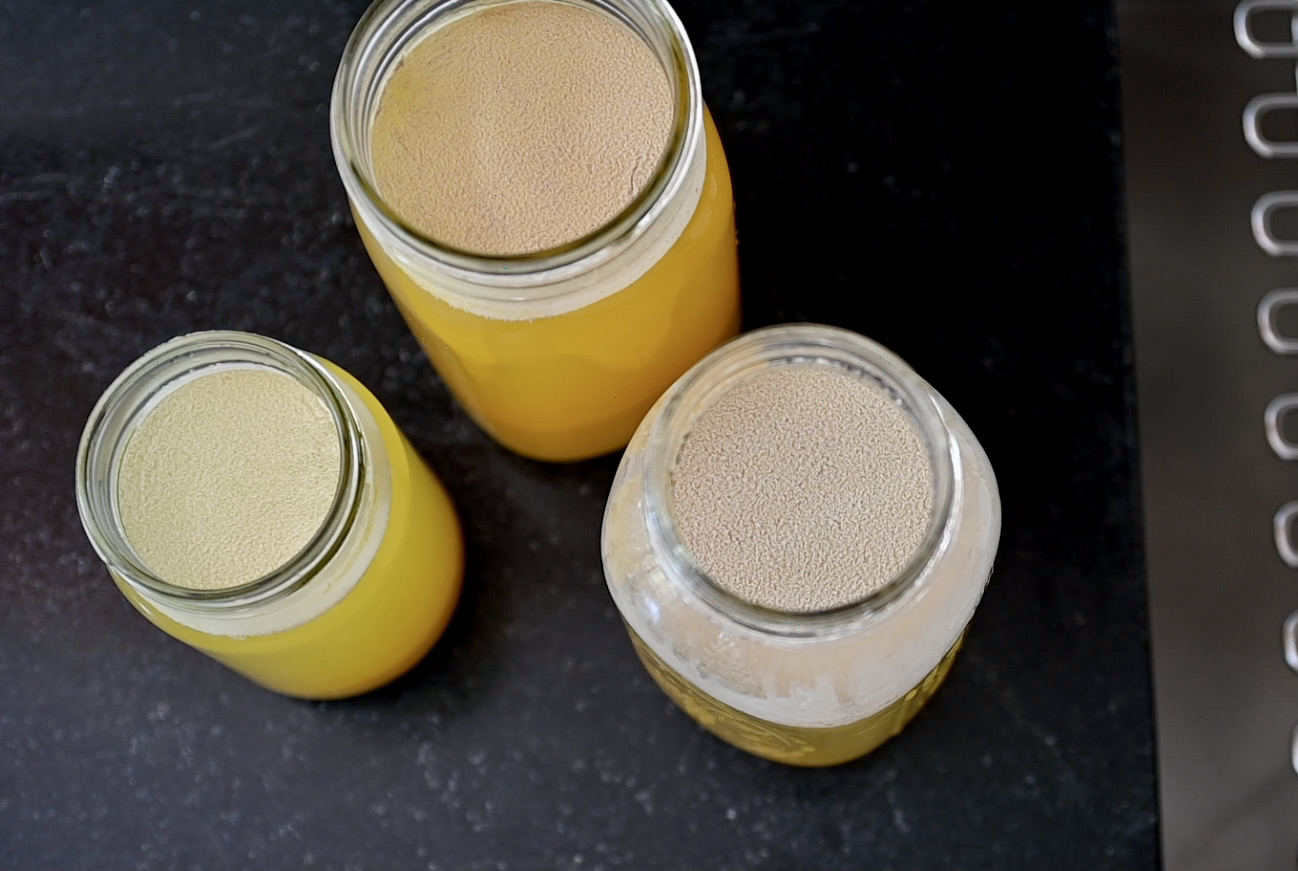
after 1 month of the 2nd ferment
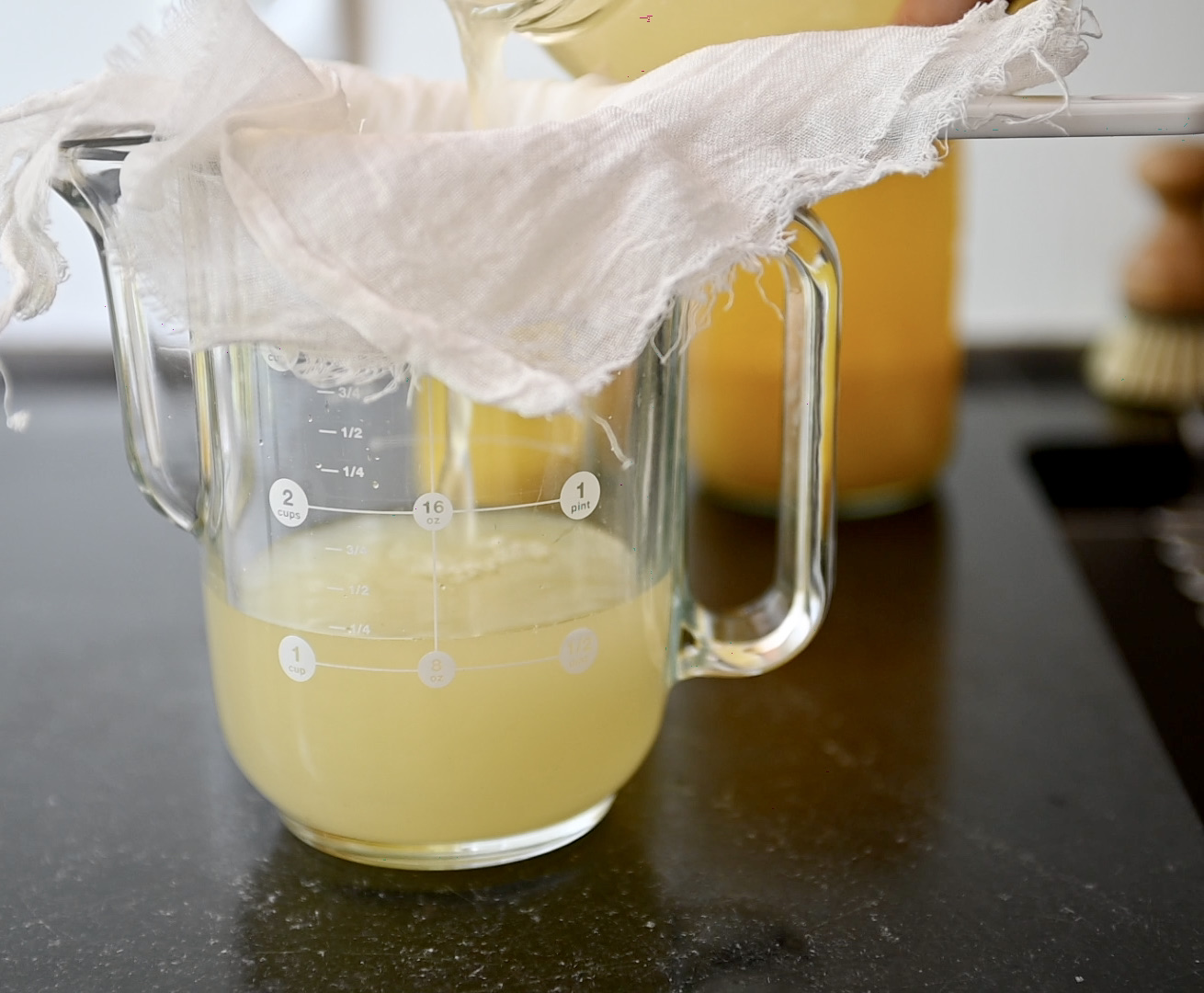
filtering it through a few layers of cheesecloth
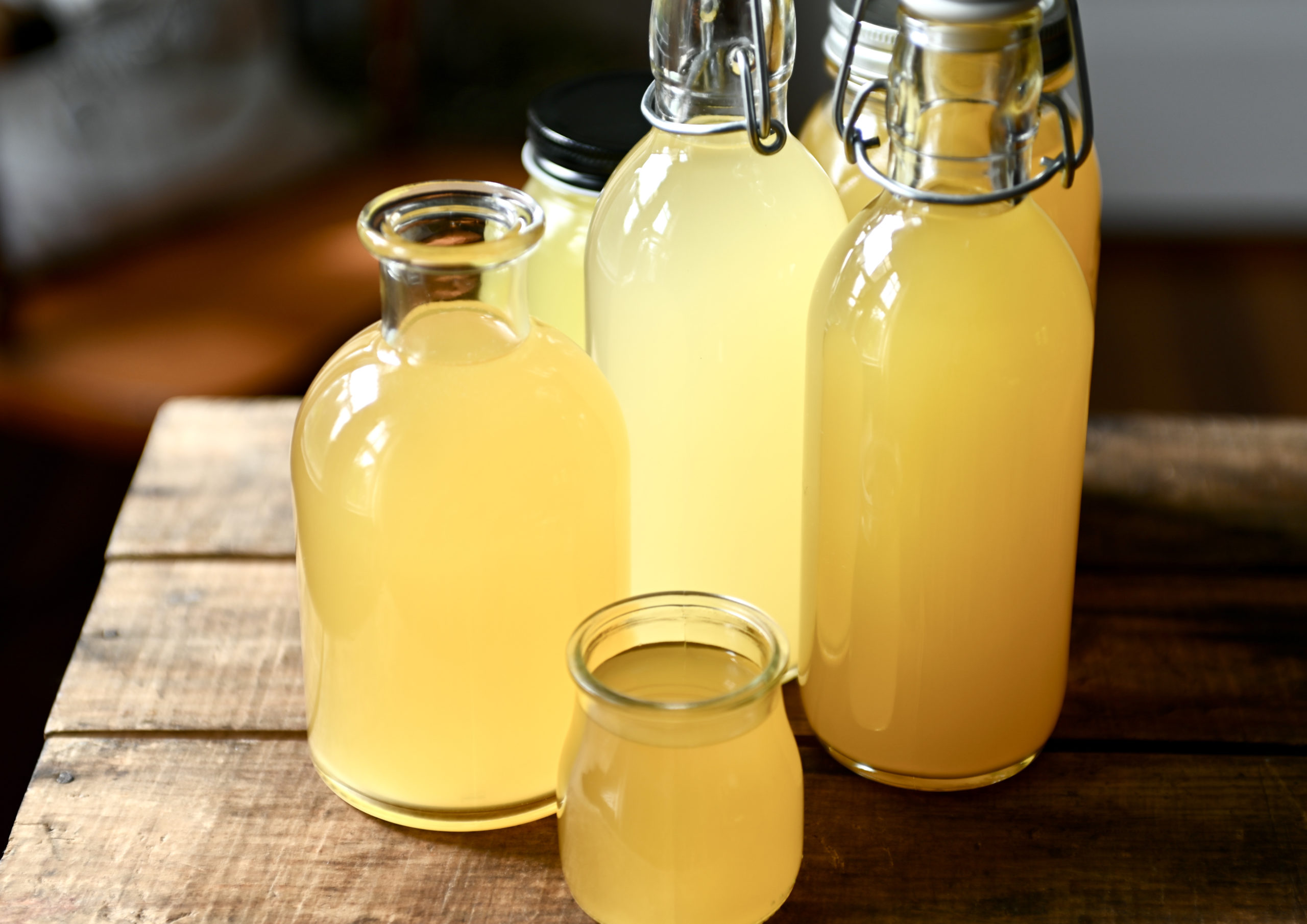
keep it in convenient bottles

use it as you do with apple cider vinegar